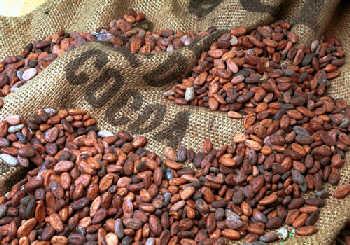The roasting method of coffee roasting
Why do coffee beans need roasting?
Coffee will be loved by people, the key lies in the formation of aroma after roasting and taste when drinking. Green coffee beans themselves are described as earthy or grassy, but roasting works like magic, completely changing and reorganizing the internal substances of green coffee beans to form new structures and strong and fragrant flavors. Roasting shapes the soul of coffee.

What are the common baking methods?
Baking machine is mainly divided into 3 categories, direct fire, semi-hot air direct fire, hot air.
1. direct fire
Direct fire type is the earliest use of baking tools, that is, the use of fire to bake hot drum heat transfer to the barrel of raw beans. The rotating drum with built-in motor churns the coffee beans in the drum, trying to balance the roasting by allowing each coffee bean to reach the hot iron evenly.
Falsehood:
● The heat conduction speed of metal is not fast enough, and it takes more time to complete baking.
What kind of equipment does each baking style have?
·Burning the outside of the drum; but the heat disappears into the air, and it is a pity that it cannot be operated well.
● When raw beans touch the inner wall of the drum for too long, they are easily burnt, resulting in bitter and burnt taste.
● The silver film or silver skin that occurs during baking will remain in the barrel and easily adhere to the profile of the coffee beans, making the flavor turbid.
About 1870~1920; German Van Gulpen devoted his life to the improvement and manufacture of rotary roasters, which also left many innovations for future generations. In one of his discoveries, he promoted coffee beans that had been brought into roasting with hot air.
In 1907, Germany made Perfekt baking machine, began to introduce this concept, it uses gas to do heating action, and there is an air pump, half of the hot air into the drum, the other half to the outer barbecue drum, today's German drum baking, still in the industry competition has certain reputation.
On the other hand, Germany's Polo Probat drum baking machine can be said to be spread to the baking world in various countries.
Roasters generally use gas or electricity as heat sources, but Diedrich, Idaho, pioneered the gas-activated infrared heat source Gas-Infrared in 1987 to make temperature control more precise and acclaimed as the first brand in North America.
At present, the roller roaster; almost all use semi-hot air direct fire type, one side to the fire directly barbecue hot roller, one side will bring hot air into the drum inside, blowing hot air into the drum, can promote the heating speed, but also blow away debris, but also to produce balanced and clean coffee beans.
However, because of the differences in the structural design of each family, and their own is the best design, in fact, to understand the coffee roasting process, the most important, the same level of different brands of roasters, and will not cause too much difference.
3. hot air type
2. semi-hot air direct fire type
In the 20th century, some people thought of the way to roast coffee beans with hot air. In addition to the iron barrier, the heat source can be directly transmitted to the green beans to improve the roasting efficiency.
The Jadez Burns Thermalo, a 1934 American baking machine made by Burns, is a hot-air model, and there are still some large baking plants in the United States that still use this type of baking machine.
Fluid-BedRoaster, an air bed roaster still available on the market. Here is a brief introduction: the structure of the hot air roaster is still designed with a roller; the beans are turned by rolling to achieve balanced baking. However, it has long been thought why not use hot air to blow raw beans; let beans float up and down, get rid of the concept of rollers.
In 1976, American Michael. Michael Sivetz designed the Fluid-Bed Roaste, an air-bed roaster that uses air blown up from below in an airtight container to allow green beans to float up and down the container until roasting is complete and then poured into a cooling tray outside the container to cool. Michael Sivetz is often seen on the website of the American Specialty Coffee Association. Schwitz's comments.
Australia also has a similar design and mechanism of baking methods; created by Ian Bersten Australia, and to market the roaster Roller Roaster also has considerable popularity. In the general baking process; the moisture in the beans is evaporated less and less, the quality becomes lighter and lighter, the proportion of the quality of the roaster will fall faster, and then take over the roasting of hot air, so repeatedly up and down, that is, the average coffee beans can be roasted, but the lack of metal drum smoldering, some people will think that there is always a taste.
Important Notice :
前街咖啡 FrontStreet Coffee has moved to new addredd:
FrontStreet Coffee Address: 315,Donghua East Road,GuangZhou
Tel:020 38364473
- Prev

Seven basic elements of brewing coffee
You don't need to be good at choosing beans if you want to drink a cup of coffee with charming flavor, but you need to pay attention to seven basic elements.
- Next

Five common preservation methods of coffee beans
In order to maintain the aroma and quality of coffee, how to package and preserve coffee beans has become a great knowledge.
Related
- Beginners will see the "Coffee pull flower" guide!
- What is the difference between ice blog purified milk and ordinary milk coffee?
- Why is the Philippines the largest producer of crops in Liberia?
- For coffee extraction, should the fine powder be retained?
- How does extracted espresso fill pressed powder? How much strength does it take to press the powder?
- How to make jasmine cold extract coffee? Is the jasmine + latte good?
- Will this little toy really make the coffee taste better? How does Lily Drip affect coffee extraction?
- Will the action of slapping the filter cup also affect coffee extraction?
- What's the difference between powder-to-water ratio and powder-to-liquid ratio?
- What is the Ethiopian local species? What does it have to do with Heirloom native species?

